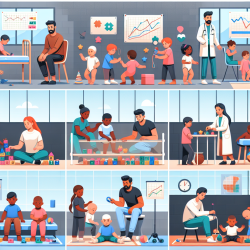Introduction
In the dynamic landscape of healthcare, the synergy between hospitals and community organizations is pivotal for enhancing population health. The recent study titled "Differential impact of hospital and community factors on breadth and depth of hospital population health partnerships" offers valuable insights into how these partnerships can be optimized. This blog explores how practitioners can leverage these findings to improve their skills and foster more effective collaborations.
Understanding the Study
The study, conducted by Puro et al., delves into the factors influencing the breadth and depth of hospital partnerships with community organizations. It employs the dimensional publicness theory and social capital framework to assess hospital and county characteristics that facilitate these partnerships. The research highlights that nonprofit and public hospitals tend to have more extensive and deeper partnerships compared to for-profit counterparts, suggesting that organizational culture and public value play significant roles.
Key Findings
- Breadth and Depth of Partnerships: Nonprofit and public hospitals exhibit greater breadth and depth in partnerships, underscoring the importance of public value culture.
- Community Social Capital: At the county level, community social capital is positively associated with the breadth of partnerships, indicating the role of local networks in fostering collaborations.
- Regulative Dimension: The study partially supports the regulative dimension of publicness, where organizational factors like bed size and system membership influence partnership dynamics.
Implications for Practitioners
Practitioners aiming to enhance their partnership strategies can draw several lessons from this research:
- Emphasize Public Value: Cultivating a culture that prioritizes public value can enhance the effectiveness of partnerships. Practitioners should strive to align their organizational goals with community health objectives.
- Leverage Social Capital: Building and nurturing community networks can expand the reach and impact of health initiatives. Practitioners should engage with local leaders and organizations to strengthen these ties.
- Adapt Organizational Strategies: Understanding the regulative dimensions of publicness can help tailor strategies that accommodate organizational and community characteristics, thereby optimizing partnership outcomes.
Encouraging Further Research
While this study provides a robust framework for understanding hospital-community partnerships, it also opens avenues for further research. Practitioners are encouraged to explore how different organizational cultures and community contexts influence partnership dynamics. Additionally, investigating the long-term impacts of these partnerships on community health can provide deeper insights into their effectiveness.
Conclusion
Effective hospital-community partnerships are essential for addressing the social determinants of health and improving population health outcomes. By embracing the insights from this study, practitioners can enhance their collaborative efforts and contribute to building healthier communities. To delve deeper into the original research, please follow this link: Differential impact of hospital and community factors on breadth and depth of hospital population health partnerships.










